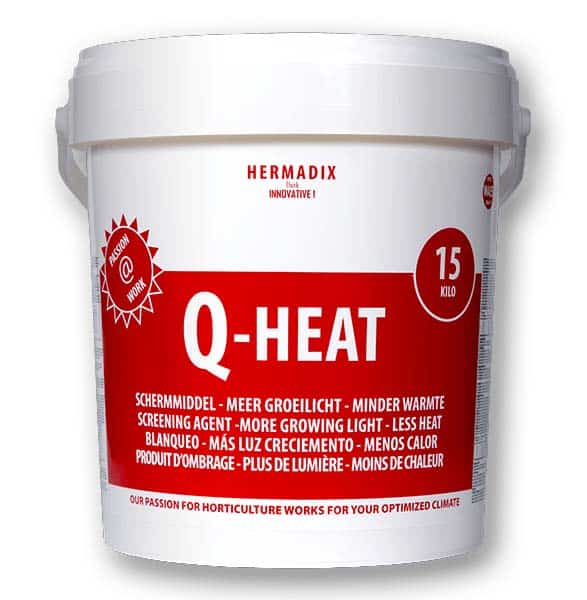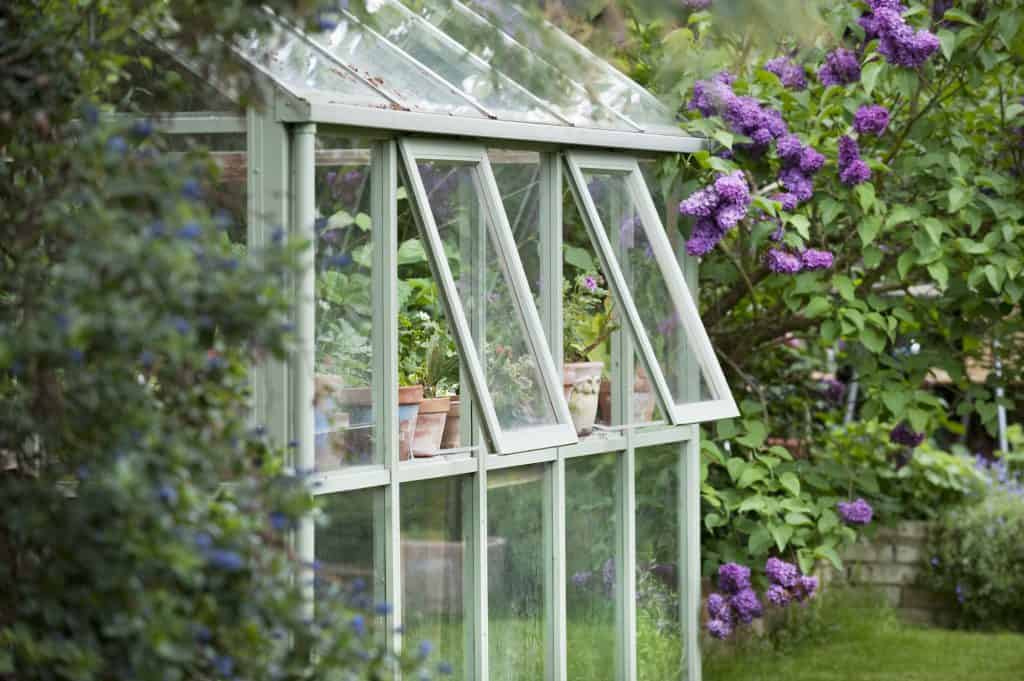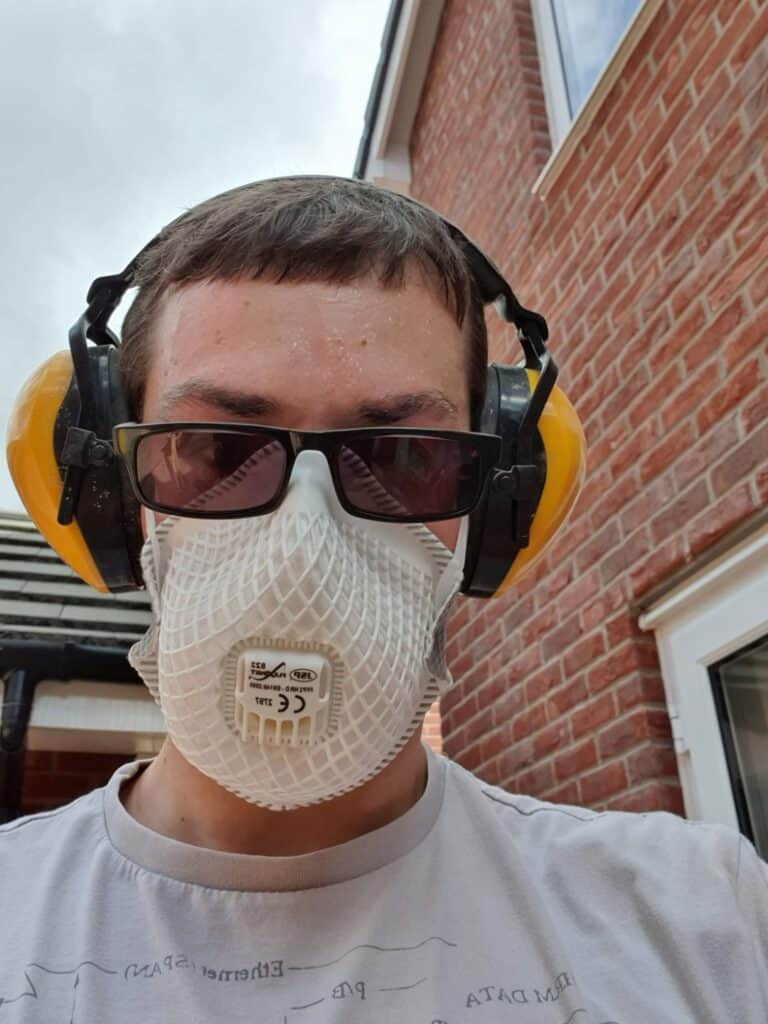If you have a greenhouse, you need to make sure you have the right conditions for your plants to grow big, tall, and strong. You need to think about the amount of light inside the greenhouse, the overall temperature, and the humidity level. Even though there are a lot of ways you can control the temperature inside the greenhouse, one of the most important agents is called whitewash.
Also called greenhouse glass paint, or a shading agent, this is important for making sure your plants grow in the right conditions. At the same time, there might be situations where you need to remove greenhouse glass paint from the inside of your greenhouse.
Why is whitewash so important, and how can you remove it quickly and effectively from the interior of your greenhouse?
What Does Whitewash Do To a Greenhouse?

Whitewash and shading agents are used to reduce the temperature inside a greenhouse. The temperature fluctuates throughout the year, and it typically peaks in the middle of the summer. If the temperature inside the greenhouse gets too hot, your plants might have a difficult time growing.
Therefore, you need to find ways to reduce the temperature inside the greenhouse, and air conditioning alone might not be enough. It can also be inordinately expensive.
Fortunately, there are more cost-effective ways you can reduce the temperature inside your Greenhouse. That is where whitewash can be helpful. Whitewash and shading agents partially reflect sunlight from the inside of the greenhouse. This can significantly reduce the peak temperature in the greenhouse, creating a more stable environment. Your temperature will not fluctuate as much, and your plants will have the optimal conditions they need to grow.
The goal is to prevent light stress from happening in your greenhouse. You could damage your plants if you expose them to light burn. Whitewash agents can help you reflect light away from the greenhouse, preventing this from happening.
Why Do You Need To Remove Whitewash From a Greenhouse?
Even though whitewash agents can be helpful, there might be situations where you need to remove them from the inside of a greenhouse. Some of the reasons why you might need to get rid of your shading agents include:
- The temperature might be dropping outside, meaning that you need more light inside the greenhouse.
- There might be new buildings surrounding the greenhouse which obstruct the flow of light into the greenhouse itself.
- You have recently purchased the greenhouse but no longer want to use the property as a greenhouse, so you need to get rid of the whitewash.
Typically, greenhouse owners remove whitewash agents in the fall because the temperature begins to drop outside. As a result, you need to find ways to get more light and heat into the greenhouse to keep your plants alive.
When it is time for you to remove shading agents from your greenhouse, there are several steps you need to follow.
The Steps for Removing Greenhouse Shading Agents on Your Own

If you want to remove whitewash and greenhouse shading agents on your own, there are several steps you need to follow. These include:
- First, you need to identify the right removal agent. There are special solutions and chemicals you can apply to your greenhouse to remove the shading agents on your own. If you have questions about what type of agent you should use, take a look at the whitewash agent’s canister. There should be instructions for how to remove it. You need to purchase the right solution to remove the whitewash agent.
- Before you do anything, make sure you close the water catch basin of your greenhouse. As you remove your whitewash agent, it will probably slow down the side of the greenhouse and hit the ground. You do not want these agents to land in your water supply. Otherwise, they could poison your plants. Whitewash agents can significantly change the pH of the water in your greenhouse, which can be a significant threat to your plants.
- Next, make sure you clean the exterior of the greenhouse thoroughly. You do not want anything to get in the way of your whitewash removing agents. A simple cleaning solution should do the trick.
- After this, take out the supplies you will need to apply the whitewash removing agent to the exterior of your greenhouse. You should also look at the package to make sure you follow the right dosage instructions. The goal is to “break” the greenhouse shading agent. If you can break the shading agent, it will be easier to remove.
- It may take some time for you to prepare the shading agent before you apply it to the greenhouse. Make sure you set aside plenty of time for this task. You will want to use the greenhouse shading agent within six hours of mixing it. If you do not use the shading agent in time, its efficacy will reduce significantly. You might need to make more shading agents, and you might need to purchase more. Try to use the agent immediately after you mix it.
- There are a few ways you can apply the solution to the roof of your greenhouse. The best way to do so is to use a specific greenhouse roof cleaner. This will make it easier for you to apply the removal agent uniformly. You can also apply the greenhouse whitewash removal agent manually; however, this will take much longer. You might also have a difficult time applying it evenly. If you want to remove whitewash from your greenhouse as quickly and safely as possible, you should use a greenhouse roof cleaner.
- As the whitewash falls from the roof of your greenhouse, you need to find a way to collect it. You do not want to harm the environment. You may want to deploy tarps around your greenhouse that can catch as much of the whitewash removal solution as possible. That way, you can dispose of it safely. There are also environmentally friendly whitewash removal agents you might want to use.
- Finally, you might want to remove the whitewash agent from your greenhouse right before a rain shower. That way, you can use the rain to clean the greenhouse completely. Again, you should still have tarps deployed that can catch the whitewash agent as it falls from your greenhouse. This is important for reducing damage to the environment.
Removing whitewash agents from your greenhouses is a demanding job. You need to make sure you set aside plenty of time to do this safely and effectively. Remember that you should protect the environment as well. Do not forget to close the water catch basin to protect your plants from harm. You need to protect the water supply of your greenhouse.
Safety Tips For Removing Whitewash From a Greenhouse

Even though it is possible for you to remove whitewash from your greenhouse on your own, you need to make sure you put safety at the top of your priority list. Some of the most important safety tips to follow include:
- Wear the right safety equipment. You will probably find yourself blasting whitewash shading agents off of your greenhouse. You need to protect yourself accordingly. For example, you should make sure you wear gloves as you mix your whitewash removal agent. You should also wear a mask so you avoid inhaling anything during the cleaning process. Finally, you should wear eye protection as well. You do not want anything to bounce off the roof of the greenhouse and strike you in the face.
- Fall protection is important. If you are removing your greenhouse shading agent manually, make sure you protect yourself against falls. If you need to climb up to the roof of the greenhouse for any reason, you need to have some sort of rope or harness around you. Keep in mind that it can be slippery on top of the greenhouse.
- Always wear closed-toed shoes. You should never do this in flip-flops. Even though there are a lot of people who like to wear shorts, t-shirts, and flip-flops when they work in the greenhouse, you need to wear closed-toed shoes if you remove a whitewash agent.
- Try to remove any trip hazards from the area. As you remove whitewash agents from the greenhouse, you will probably be focused on the roof. You might not be looking at your feet very often. Trip hazards can be a serious issue as you work on your greenhouse. Try to put away any equipment you do not need before you get started. If there are gardening tools lying on the floor, try to get rid of them. If you have trays and pots lying around, put them in a safe place. Do not leave them at your feet.
- Do not be afraid to ask for help if you need it. If this is your first time removing whitewash agents from the greenhouse, you might want to talk to someone who has done this before. The more people you have helping you, the faster it will go. If you are afraid you will damage your plants or greenhouse structure, you might want to reach out to a professional who can assist you. This is particularly important if you do not have the right equipment.
Even though you want to complete this job as quickly as possible, you must prioritize your safety. You need to think about the safety of the structure, the safety of your plants, and the safety of those around you. Take the time to create a firm plan of action. Then, remove whitewash agents from your greenhouse methodically.
Frequently Asked Questions About Removing Whitewash Agents from a Greenhouse
There are a few common questions people ask about removing whitewash agents from a greenhouse. These include:
Greenhouses come in all shapes and forms. You might have a small greenhouse in your backyard. It might only be the size of a room or two. On the other hand, you might have a professional greenhouse that spans several acres. The nice thing about having a greenhouse is that you can customize it to meet your needs.
It depends on how many people are working with you, what type of agent you use, and how large the greenhouse is. In general, you should set aside several hours to remove whitewash agents from your greenhouse. If you have a large area, it could take all day. If you have specialized equipment, you may finish the job more quickly.
Yes, you can use vinegar to clean your greenhouse. All you need to do is mix it with a little bit of distilled water. Then, you can spray it along the interior of your greenhouse, removing stains, dirt, and other debris. If you want to remove the whitewash agent, you will need to use something stronger than vinegar. There are specialized solutions you can use to remove whitewash Agents from your greenhouse.
There are a few reasons why you may want to remove this from your greenhouse. The biggest reason is that the temperature has begun to drop outside. When it gets cold outside, you need to maximize the amount of light inside the greenhouse. This is particularly important when the sun sets earlier. Therefore, you may want to remove whitewash agents from your greenhouse for the health and safety of your plants.
Yes, it is possible for you to remove shading agents from your greenhouse on your own. It takes a bit of time, patience, and practice. You also need to have the right equipment. On the other hand, if you run into issues, you should not hesitate to reach out to a professional who can help you. They might teach you how to remove shading agents from your greenhouse for next time.
